Just yesterday I returned from the shipyard where my new yacht is currently built. One of the tasks was a little “dress rehearsal” for a deciding detail for any sailboat indeed: The cleats. It´s a really small detail, you may think and what´s the great fuzz about those metal clamps? Well, s it turns out, it is one wonderful story about a man´s vision, a man´s fight and his success in creating an iconic, simple, beautiful and great product. It is also a testament for this unstoppable will of humans, to create, to develop and to improve stuff – and their refusal to take things for granted.

But let´s start at the beginning: You may know that I want my ALPHA to become a beautiful, clean and neat ship. She should live up to Peter Norlin´s genius and be worth bearing his name on the one hand. On the other hand, I want this yacht to incorporate only parts and equipment that is simple, high-class and beautiful. It´s not about bling. It´s about aspiration. That said, screwing some ordinary ugly aluminium-clamps onto the deck was out of question: I knew right from the start, that only one product may be used. Nomen cleats.
Meeting Axel Hoppenhaus at Nomen Products in Hamburg
I learned about Nomen and other cleats through my job as a boat dealer. With Beneteau yachts for example, Nomen cleats used to be standard on the First 53 and had been offered as upgrades for Oceanis yachts upsize 50 feet. I also came across the flush-cleats by Versari & Delmonte, with which I made some sailing experience on sea trials. But I never quite connected to this system nor did I liked the ordinary clamps available on the market. Nomen cleats, however, are not just beautiful, they simple work. This is how I contacted the man behind this product, designer Axel Hoppenhaus. As it turns out, he lives and works not far from me in Hamburg.

Just the same way as I proceeded with my brand new ship´s clock and barometer from Wempe, I asked Axel if I could collect the cleats directly at his place – and if he would tell me the story behind them. Happy that he agreed, two weeks ago we finally met. Nomen Products, as his company is called, is situated in the old town part of Hamburg in a very nice, lofty office. There´s some creative chaotic atmosphere, pictures and large format posters on the wall and many boxes filled with cleats of all sizes ready for shipment. Axel smiles brightly as he welcomes me. So we sit down. I´m humbled that this man takes some of his precious time, as with so many people in the business right now, Axel and his Nomen design bureau is pretty busy with client´s orders.
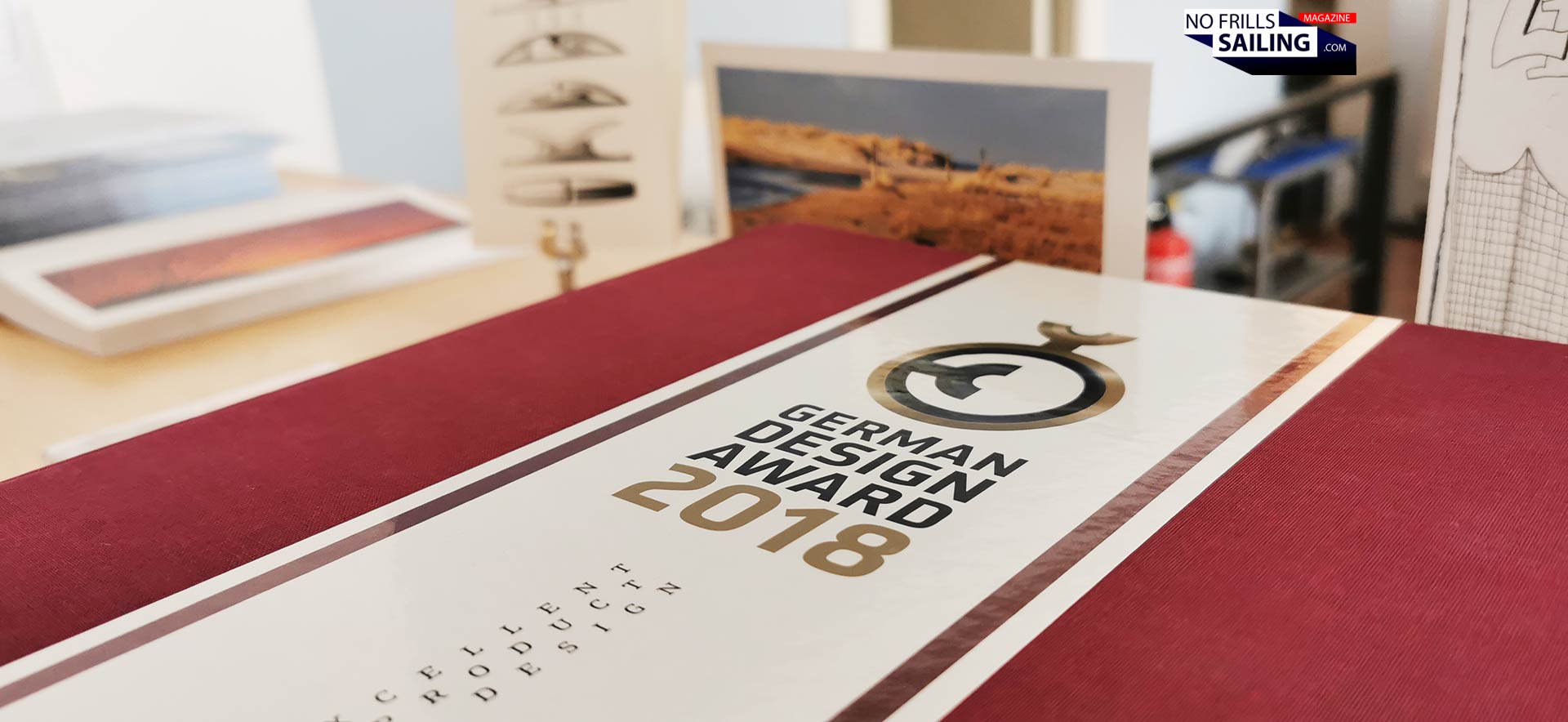
You may also have come across a Nomen cleat here and there. Be it in the marina, on a boat show or through media. His products win prices and are praised, especially in the high-class world of yachting. The renowned German Design Award for Nomen cleats won in 2018 is only one of praise his product got. Much more valuable is the feedback from so many clients and yacht designers, which I will learn later. We sit down at the table, fresh coffee for me, a glass of water for Axel. He folds his hand and smiles: Directly behind him is a supersized design sketch of his product, his “baby”, the Nomen cleat. As he notices my eyes always focusing on that poster, he says: “This is it, this is the drawing it all started with …”

Nomen cleats are indeed luxury products. Their price is considerably higher than that for an ordinary alu or stainless steel cleat. In fact, the price for the six cleats I ordered for my Omega 42 yacht would have bought me almost tenfold of the cheapest clamps available. So what makes people buy a 500 Euro cleat? And most important, what makes a man design a product that would turn out to be so ridiculously expensive? Well, this is the amazing story of Axel Hppenhaus.
A nonconformist kid becoming an able designer
It would be too harsh to describe 1957 born little Axel as a “problem-child”. But his parents found it difficult to make the young boy churn out good grades in school. He wasn´t a bad pupil either. As he says, he only learned when the subject matter was of interest for him. And he despised teachers trying to explain to him how he should see the world. As a kid, he thought he didn´t need anyone to explain how the world works. So he was sent from his sheltered home in Western Germany to the farthest Northern end: A boarding school on the Frisian Island of Spiekeroog in the North Sea. His grades wouldn´t improve as much as his parents had hoped, but he did his A-levels and – most importantly – discovered his love for the sea and sailing. This time marked him for life. Still today Axel is an active alumni and patron of his school.

He learned the beautiful profession of master boatbuilder where he worked on America´s Cupper yachts, huge and beautiful aluminium boats. Names like SISISI, RUBIN or PINTA make him smile. A time he still values. Following his love for boats, he started to study naval architecture, which quickly turned out to be too technical for him. Large ships, commercial freighters aren´t his thing, he says: He was more on the yacht-side of seafaring. And looked for a more aesthetic approach to this matter. So he changed over to industrial design, where he graduated in the year 1990 with an – even today! – groundbreaking diploma.

He shows me his “Biwag”-design study. A performance catamaran that has a modular cockpit which may either serve as a shore-base “campsite” whilst the cat is out for all-out racing, or as a cruising cockpit when attached to the catamaran. Everything is modular, lightweight and of course trailerable. Looking at his diploma and the large model he built, I shake my head in awe: This concept alone is worth an article! Axel started earning his first money designing yacht projects (which never became reality) or designing furniture. But soon the Dehler company (then still the original company before takeover by Hanse Yachts) and Judel/Vrolijk design bureau showed interest in the works of the young designer.
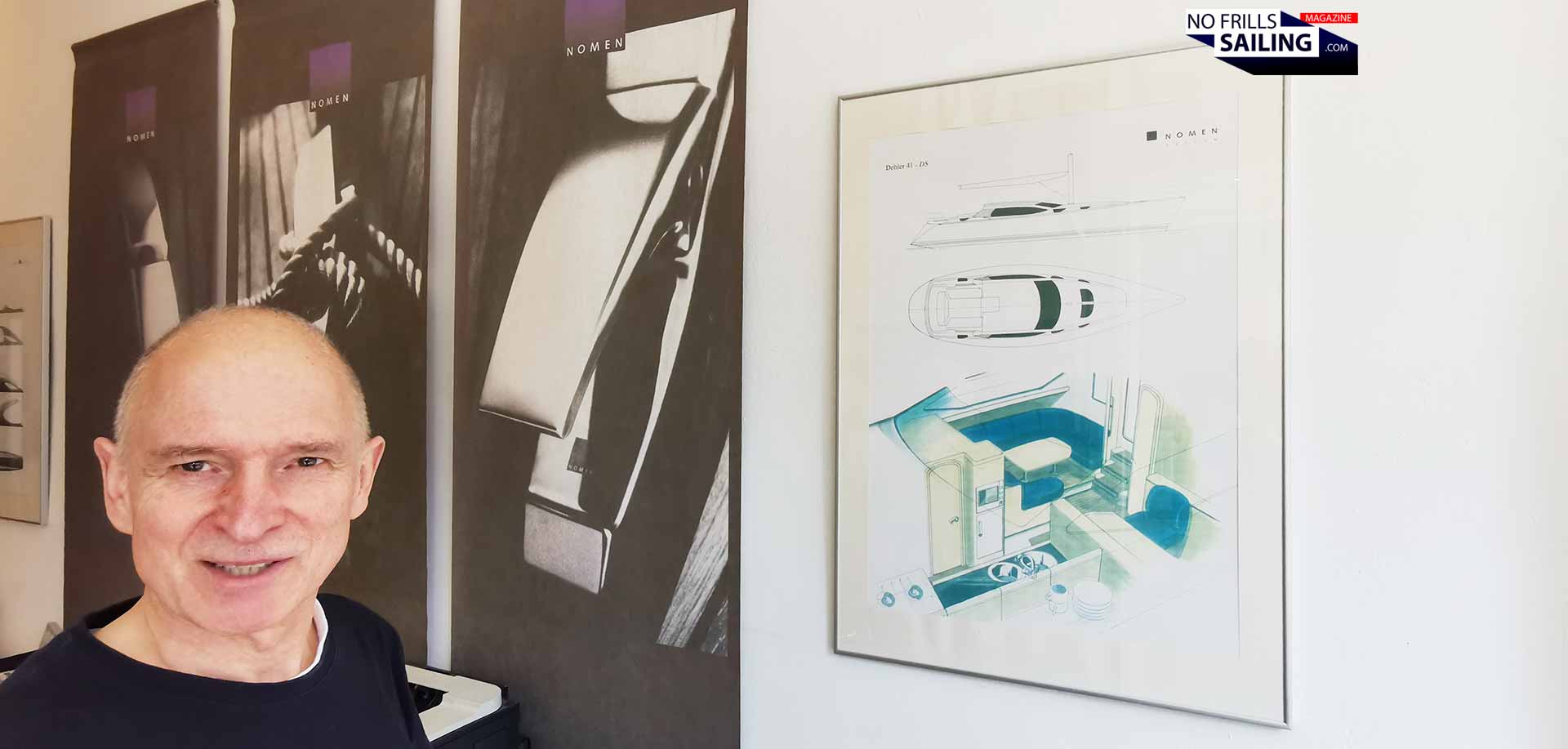
Axel developed a caravan for Dehler (caravan and camping used to be products made by Dehler together with their boats), the Optima 5.4 – this turned out to become a true classic icon for German caravan enthusiasts. Then, at last, young Axel became involved in yacht design: He shows me an interior design for a Dehler 41 DS project. Starting to become an illustrator for German “Yacht” magazine, regular income was flowing in. But deep inside, this one idea that was boiling in him did not stop to keep him awake at night … somehow, he had the vision to truly revolutionize this often neglected part of a sailboat. He was convinced that his idea would be the solution.
The hard, long start-up
In the deepest sense of the meaning, he “stumbled” upon this topic. Cleats are bulky, ugly parts of any boat´s equipment, he says. As it seemed, only a few people within the industry had dared to think about this. How can you make the cleats work – but at the same time transform them into beautiful icons, flush mounted? More and more the idea in his head materialized in first sketches. Then, after just three months of true design and engineering, the first Nomen cleat was born. Axel was exhilarated: Simple, beautiful and absolutely suitable for everyday use. But as it is with so many great ideas, the start-up from idea to product is a very, very long and challenging road.
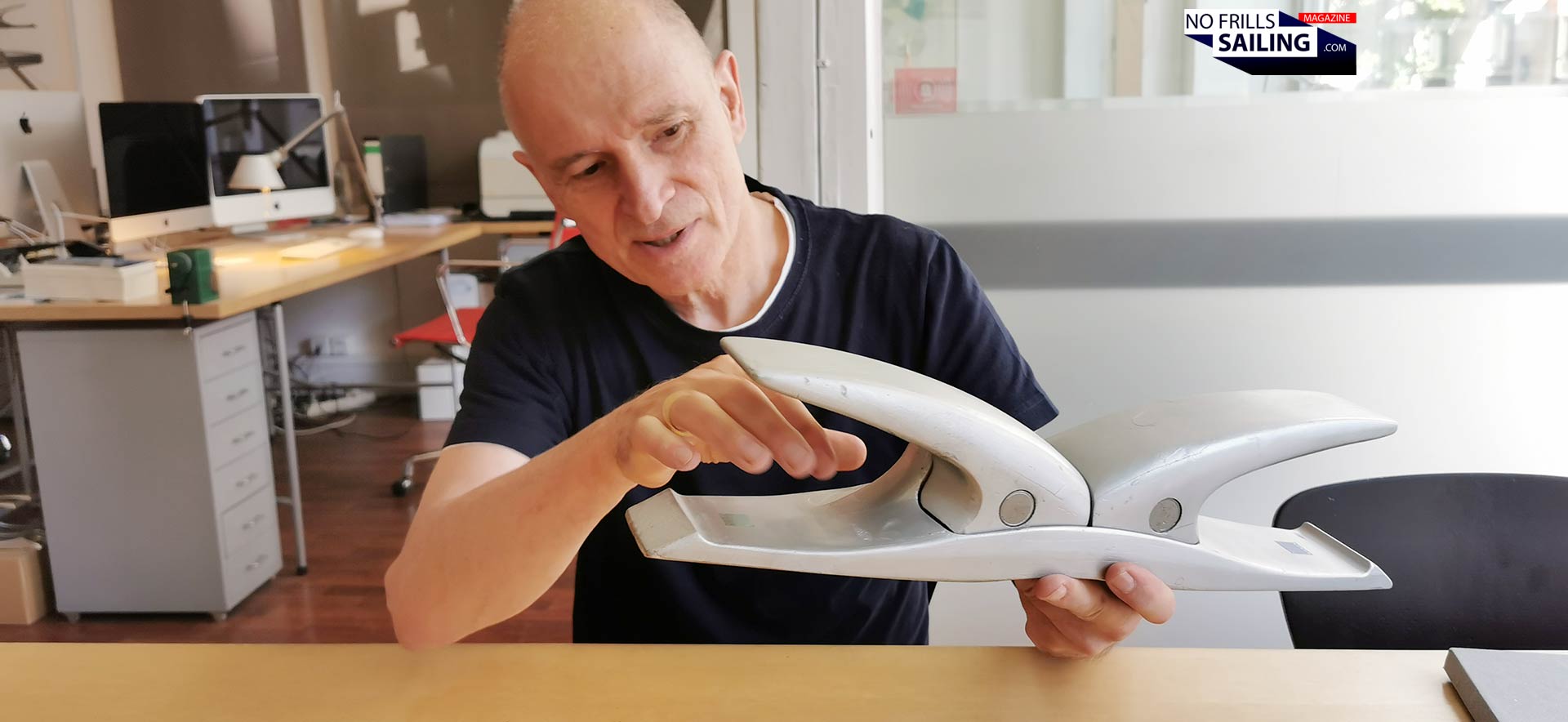
Axel shortly dashes down into the basement and returns with a Nomen cleat. From afar I couldn´t see it, holding it in my hands it is clear that this is a working model, made from wood. The first ever made model, a demonstrator, he said. Built in 1996, that´s 30 years ago. Axel was convinced that his new cleat would attract sailboat and motoryacht owners, would excite shipyards and spark sales. Well, it didn´t. First he had to find a producer: The idea, to sell a license and cash in on regular fees didn´t pay off. So he had to become the producer himself. First trials with a parts-maker for racing bikes – after all it was the exclusive supplier for custom race bikes of the French national team – turned out a disastrous waste of time. And money.

Axel demonstrates the simple handling of the Nomen cleat with his wooden model. I find it fascinating that this 30 years old model, launch demonstrator and acquisition tool, already has all the details and depth of the very product, Axel was able to launch later. “Later” means six years. It was a long, tiresome road. A road that not only ate away lots of energy, time and efforts, but also took its toll on Axel´s private life. Up until a moment when his marriage was on the edge (but luckily later recovered) and his financial buffer almost in ruins. But then it happened …
Nomen´s breakthrough at METS Amsterdam trade fair
It was the boating industry´s prime B2B-trade fair, Amsterdam´s famous METS show, where Axel finally attended with a first real metal-made Nomen clamp. It is the year 2002, eight years of hard work and trials, many fails have passed. He laughs out loud as he tells me the story of how he barely couldn´t afford to rent the smallest booth possible. “It was smaller than a chicken house!”, he chuckles. Just a simple desk, a poster and a Nomen cleat mounted on top. His product stirred up some interest – and instantly won its first prize right on the show.

People went by the stand, many stopped, looking at this new thing. At one point a decider of Osculati, one the big, big players in the market of boat equipment, went up to him. He asked how much a clamp would be costing. Upon hearing the price, the guy just jeered at Axel, jolted his shoulder and said: “Good luck, Mister!” Well, it wasn’t luck, he needed, but a chance to show what his product was capable of.
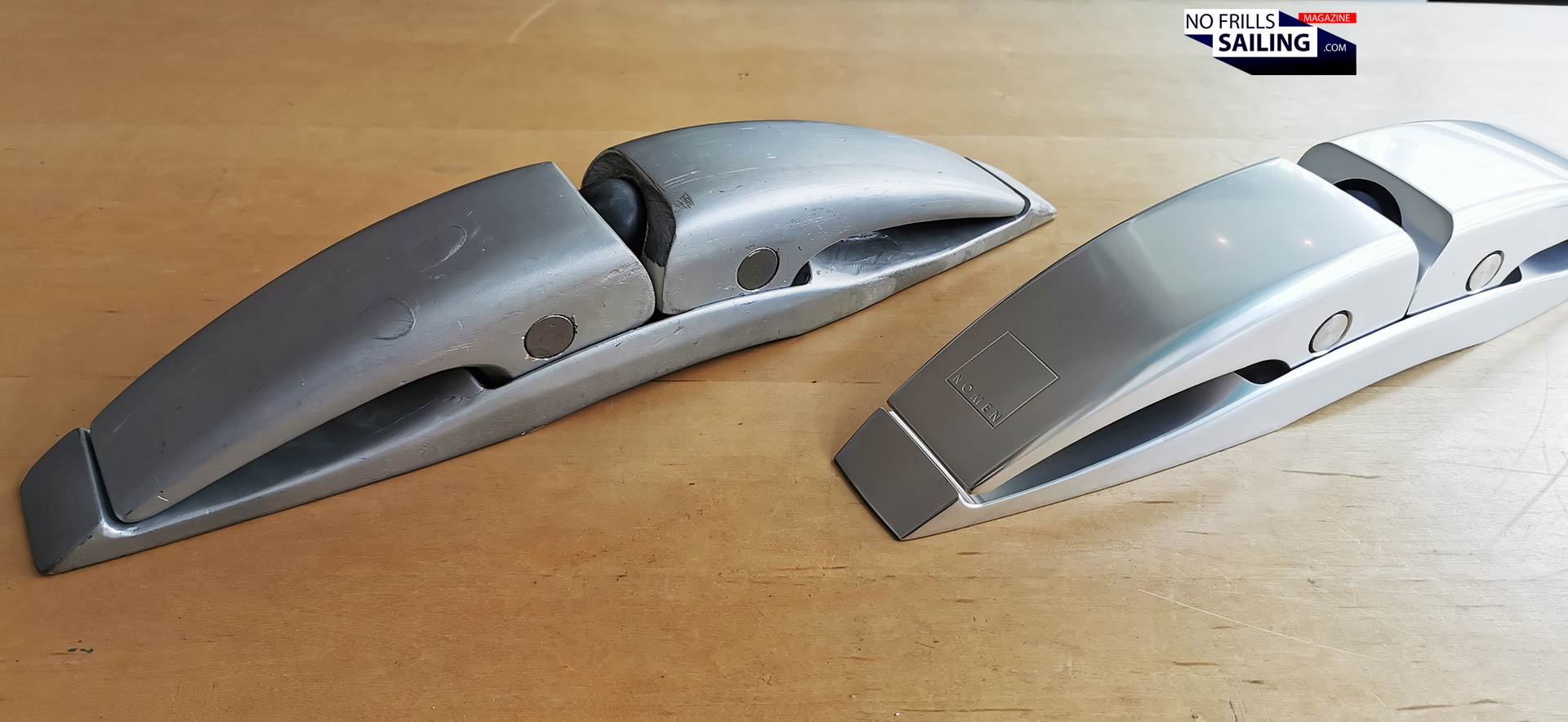
Slowly the first orders came pouring in, one after another. As he had finally found a metalworks company near Hamburg that could produce the Nomen cleats in a quality that was needed to satisfy the high-grade attitude of the new brand, series production started and Axel delivered cleats for many yachts. As it turned out, the guy who had rented the booth in front of him had watched his “desperate” attempts to sell his idea. He had to testify his appreciation and Axel earned a nickname: Having apparently found Columbus´s Egg, he from that moment on was dubbed “Leonardo Colombo” when both met.
No compromises in Quality: 100 % Made in Germany
Slowly the insisting for high quality partnerships and his attitude of not making any concessions to material and finishing paid off. It all started with upper priced yachts, big units and one-offs, Axel tells me. Those owners seek the extraordinary and are willing to pay more for highest quality and the bonus of sticking out from the masses. Never would Axel relocate production to low-cost manufacturing areas like China: Having his producers near Hamburg makes it possible to react to unforeseen problems or realizing special wishes from clients.
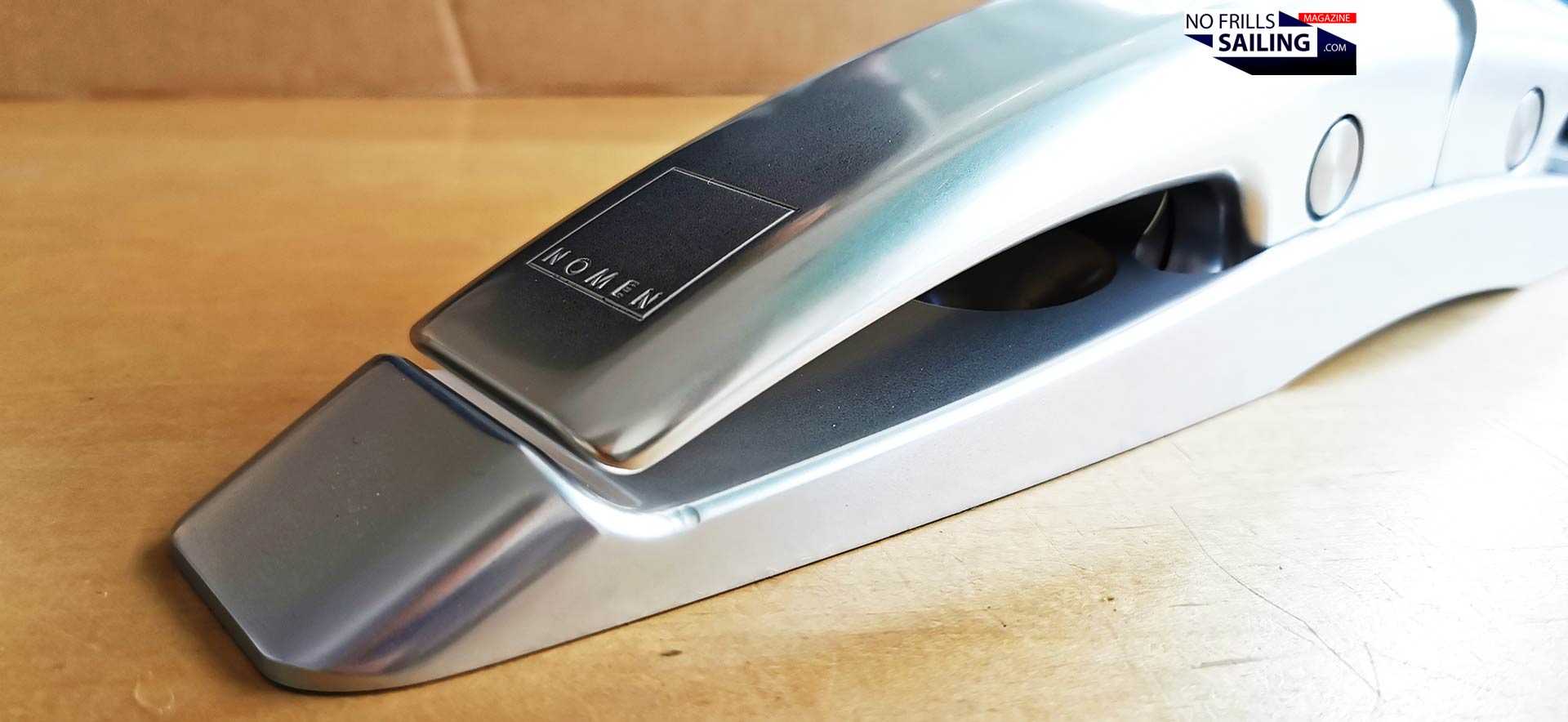
In this, Nomen cleats are 100 percent made in Germany. Something products of nowadays can only rarely offer anymore. It´s also part of Axel´s vision for sustainable proceedings: He wants to avoid long transport, waste of energy and resources. Producing locally keeps knowledge and the future of a project “at home” – and quality high. I can see it by holding one of the cleats in my own hands. It´s a heavy stainless steel quality. Perfectly polished, shiny, spotless. Yes, I reassure myself, it is definitely worth ten times the price of an ordinary die-cast aluminium cleat! In this, I ask Axel to show what the ingenuity of the Nomen cleat is all about.
Nomen Cleats: A Child´s Play
Really, it´s a no brainer! All you need is a special made tool that comes with the cleats. This is a bolt that, upon putting some efforts in it, will press out the bolts securing the moving parts of the cleat – let´s call them wings – from the deck-mounted part, the base. Axel demonstrates it, seconds later the bolts come loose and with a swift movement the wings are disconnected.

What´s left to see is the clever mechanism of the flush-folding wings: A rubber-made ball in the center makes them click into the upward “active” and downward “flush” position. When down, the cleat becomes a nice stylish accessory on your boat´s deck. There is no way you can trip over one of these, nor can any other line get entangled: It´s not unlikely that Jib sheets could become tangled up especially in midship-mounted spring clamps.
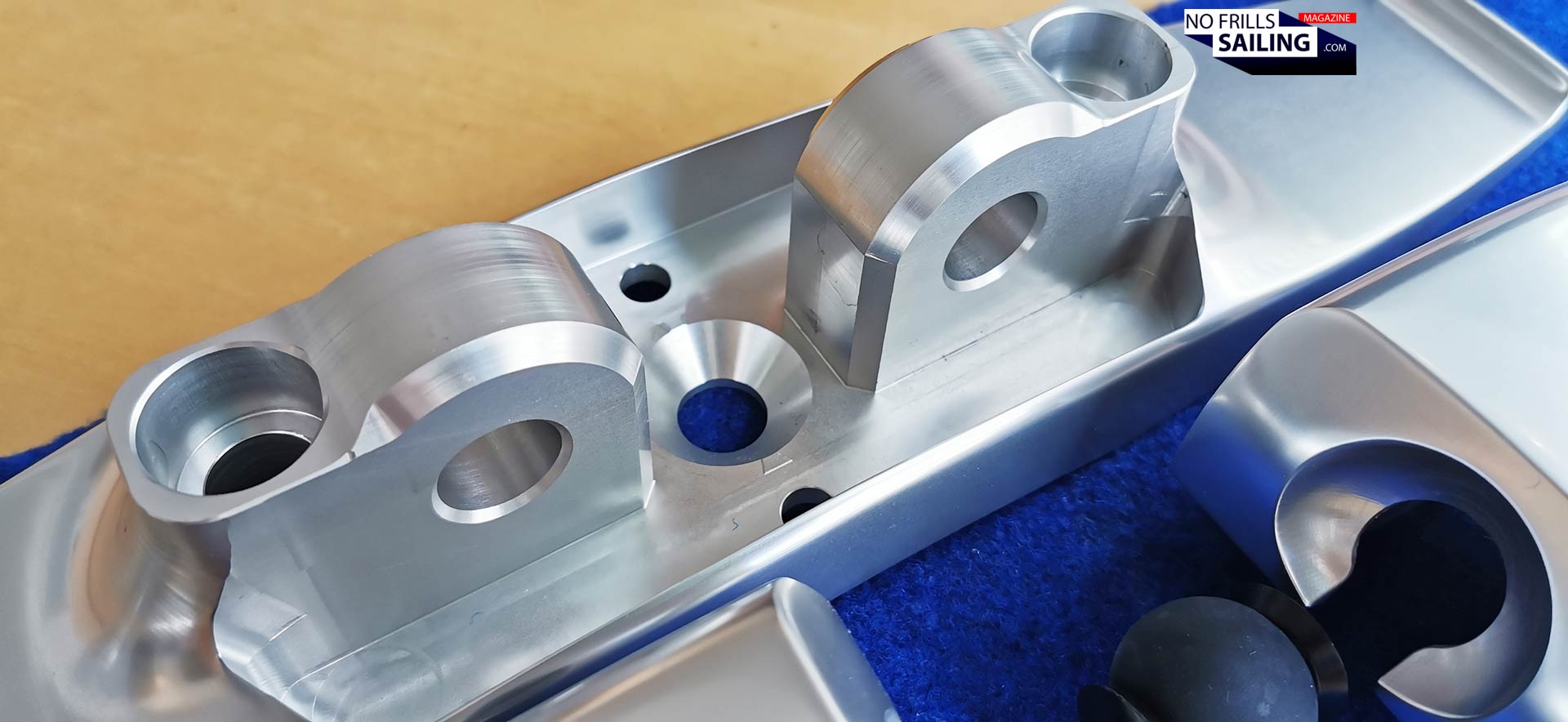
When folded up, the angle of the wings are perfectly adjusted to take on your landlines and tie a perfect cleat hitch. The strength of the massive stainless steel parts can withstand manifold the pressure exerted on moored boats in real life. When putting his products to the tests, Axel tells me, it´s more likely that your landline will fail and break long before the cleat will. There is no way it can be taken apart even by the most violent storms rocking a moored yacht.
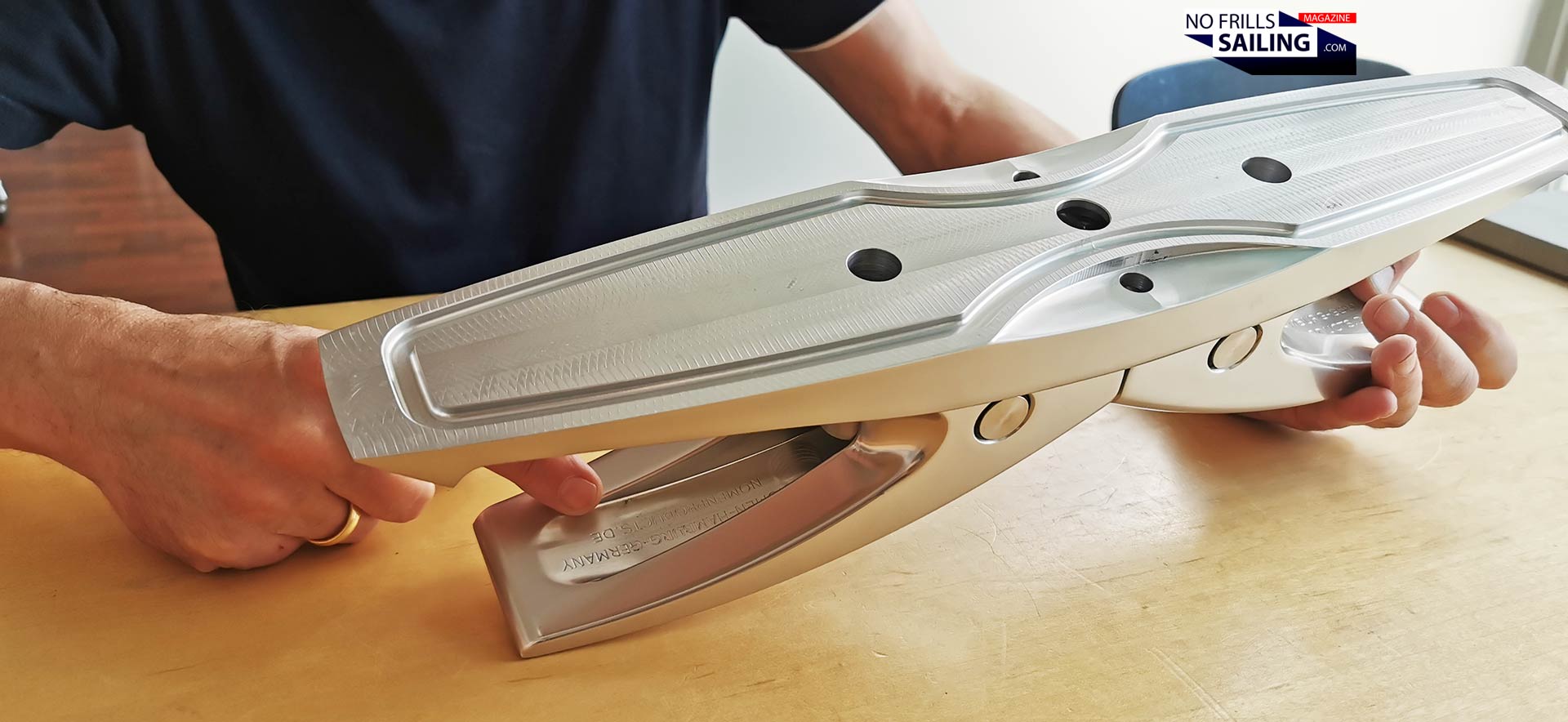
The parts are CNC-milled from massive high grade steel and aluminium blocks. In fact, in ask Axel if I could have a look at Nomen´s production. He agrees so you may be looking forward to a follow-up article on these cleats in the near future! Excellent. By the way – if you do not wish to miss any new article published on NO FRILLS SAILING.com, you may simply subscribe to my monthly newsletter here. But back to the story …
Refining and developing the Product
All you´ve seen from Nomen cleats so far in this article is the Cleat 1, the first and original Nomen clamp. “Classic cleat”, he calls it. It is widely used primarily on power boats and bigger sailboats. For my Omega 42 I went for the successor of that product, the “Sport cleat” or Nomen 3, as Axel calls it. The idea was to take all the feedback and experience from the first product and make it less heavy, a bit slimmer so it may be used on smaller yachts too and also a bit cheaper. Of course, without sacrificing the Nomen feats, Axel insists.
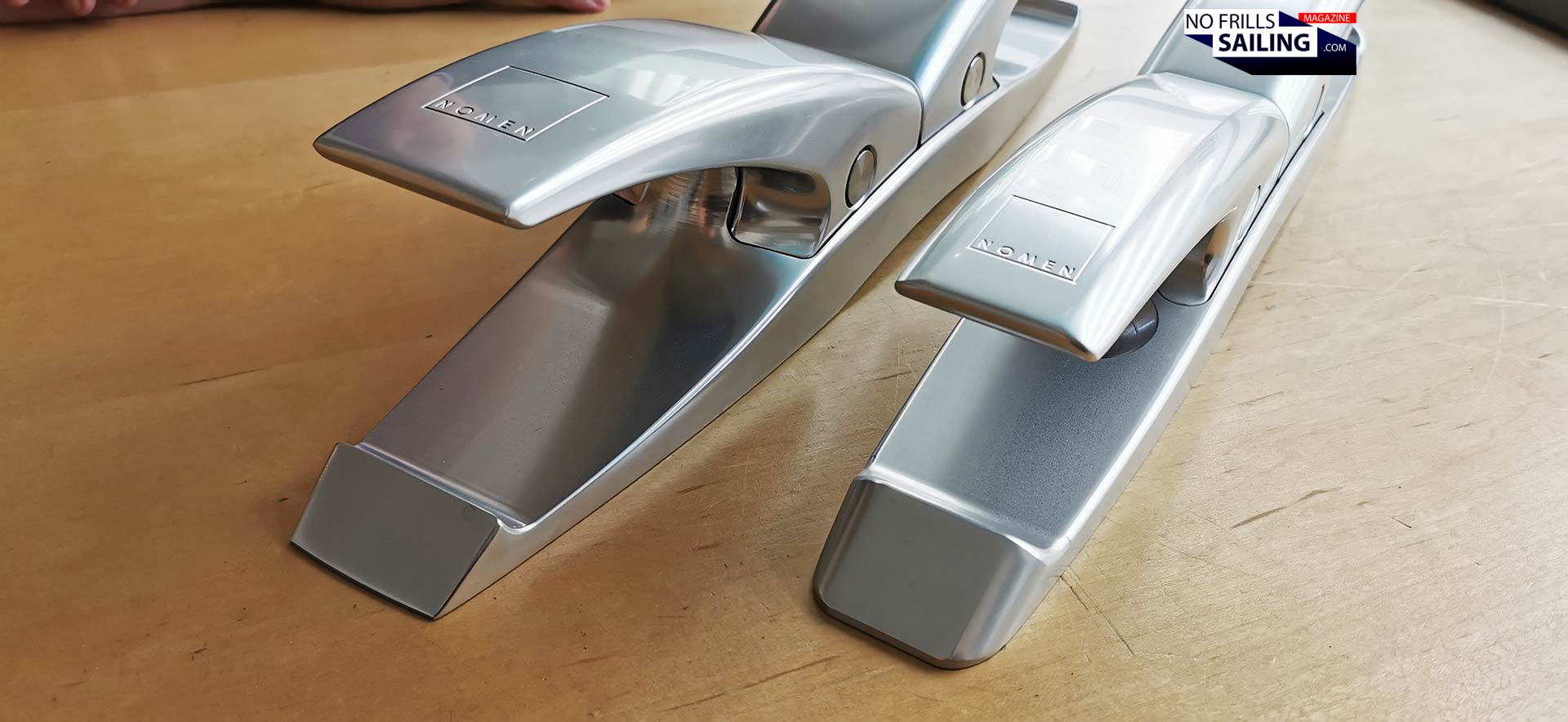
He puts a Nomen 1 next to a Nomen 3 and I can see the difference: It´s much slimmer. Also, it weighs less indeed. Axel says, the “sport cleat” is stunningly 65 percent lighter! The three screws with which the cleat´s base is mounted to the boat´s deck are a bit wider apart from each other than in Nomen 1, further optimizing load distribution and wear & tear of the cleat.
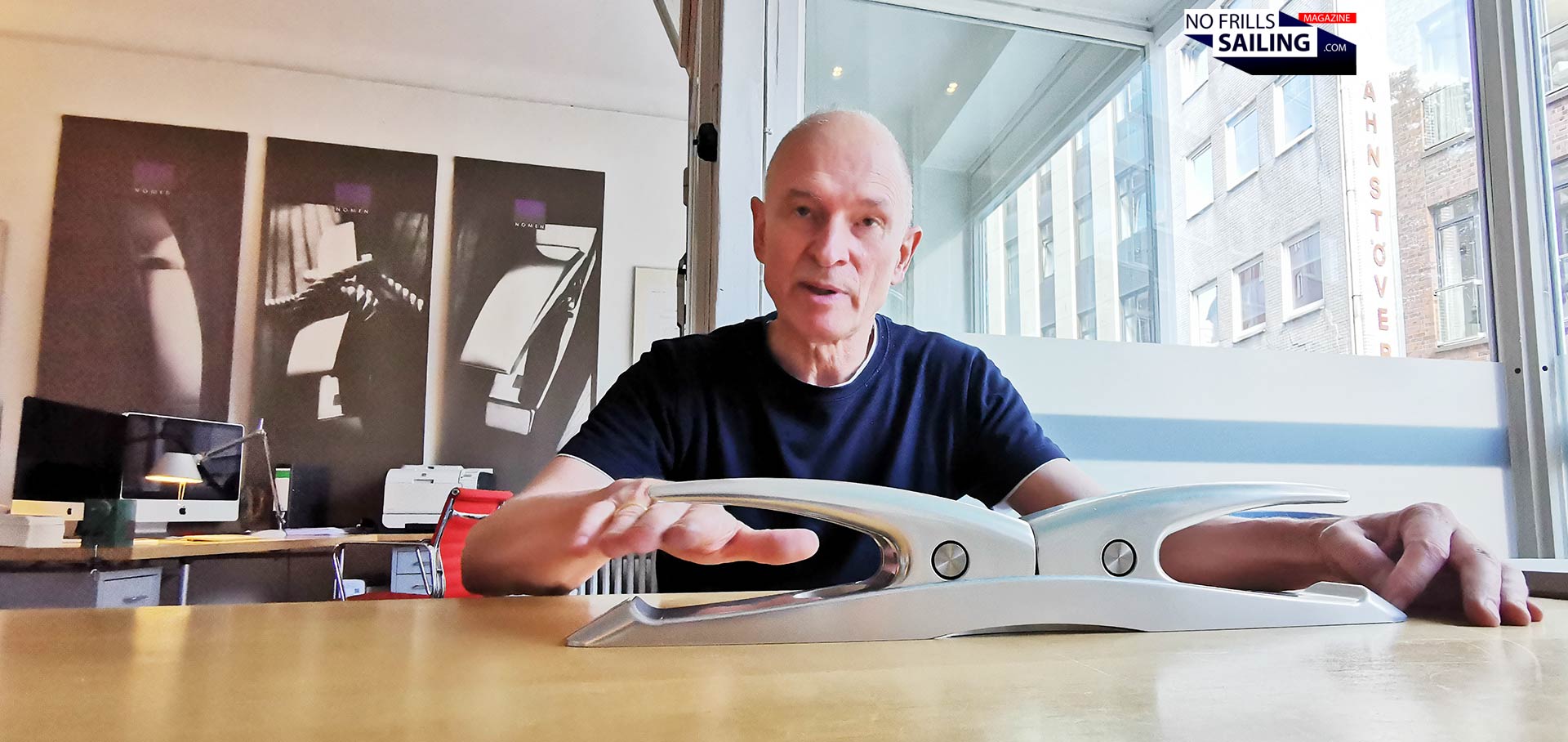
As with any Nomen cleat, the backside features a recess for Sika sealant and two drains. The rubber ball of Cleat 1 is now a cylinder, but the mechanics and proceedings are the same. Again, the “Sport cleat” is easily dismountable for service and cleaning. By optimizing how the massive base block is milled and taking away more offcut material without compromising structural integrity, there´s not just awesome weight saving, but also a reduction of costs.
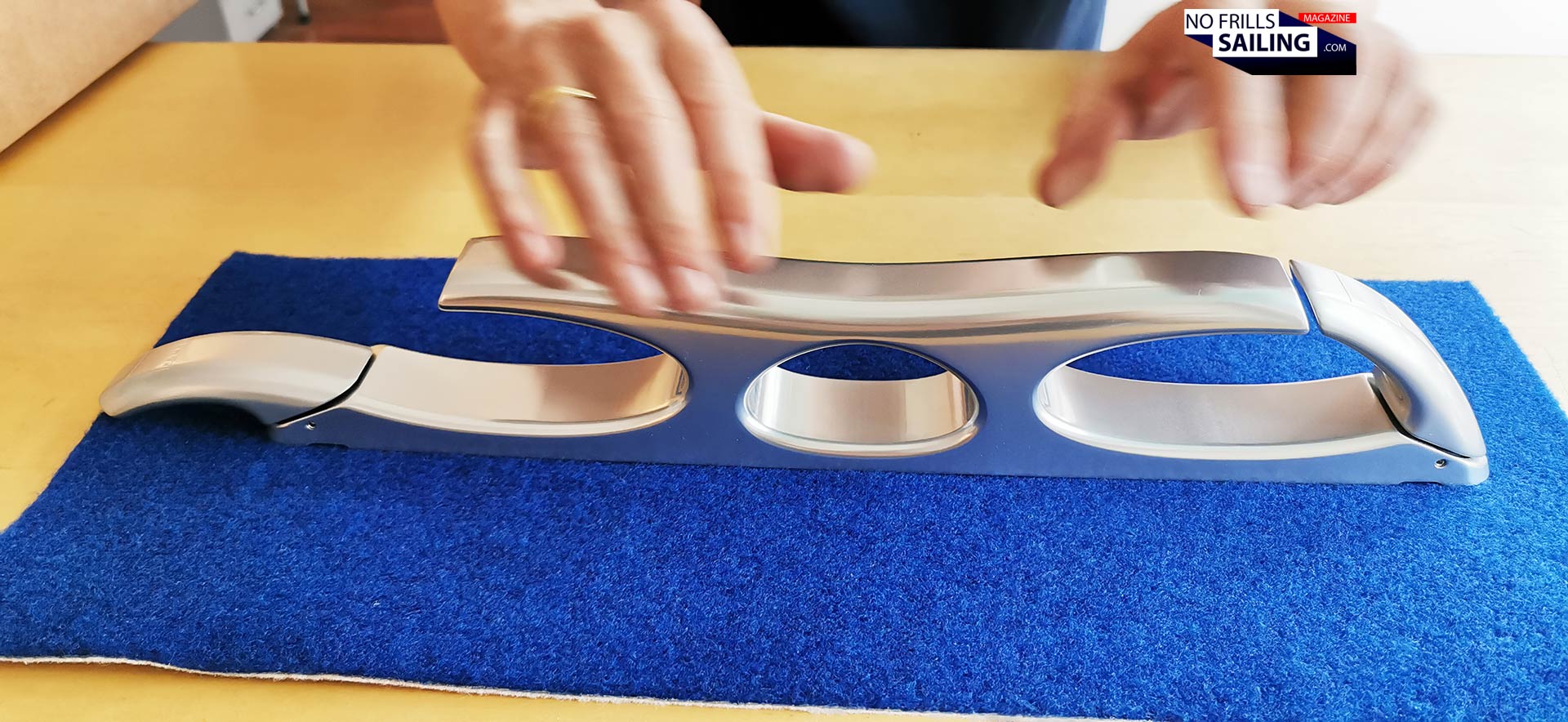
The Nomen 3, or “Sport cleat”, saves roughly 10 to 15 percent in budget. This is a lot! Axel confirms that the introduction of this new product caused a spike in sales for smaller units, like my boat. But also series production boat companies – like Beneteau – increasingly ask for parts now. The “Sport cleat” is preferred on performance-oriented yachts and luxury sport-boats, whereas the classy original still remains the top-seller for XL-units and powerboats.

There´s a 2 missing between Nomen 1 and 3, right? Well, here it is: The “Clip cleat”, or Nomen 2. Axel thought of a way to combine the classic fairlead with the clamp. Also, further minimizing tripping and entanglement hazards. That´s the outcome: Clip cleat features two little spring levers to either side, “closing” the cleat and thus securing the bowline. It can also serve as a fairlead. The levers may be fixed in “closed” and “open” position. This cleat is very, very slim and even lighter. Nomen Products won another design award with this thing …
From Designers for Designers
The world of boating is a very small world. I would estimate that in Europe there are less than a thousand names of people really relevant for the business. Designers? Even less! Axel is a designer himself. Maybe his name is not as shiny or often featured in the magazines as Frers, Felci or Cossutti´s brands, but that´s not important at all, he emphasizes. The trick is, that those guys know your name! And they apparently do.
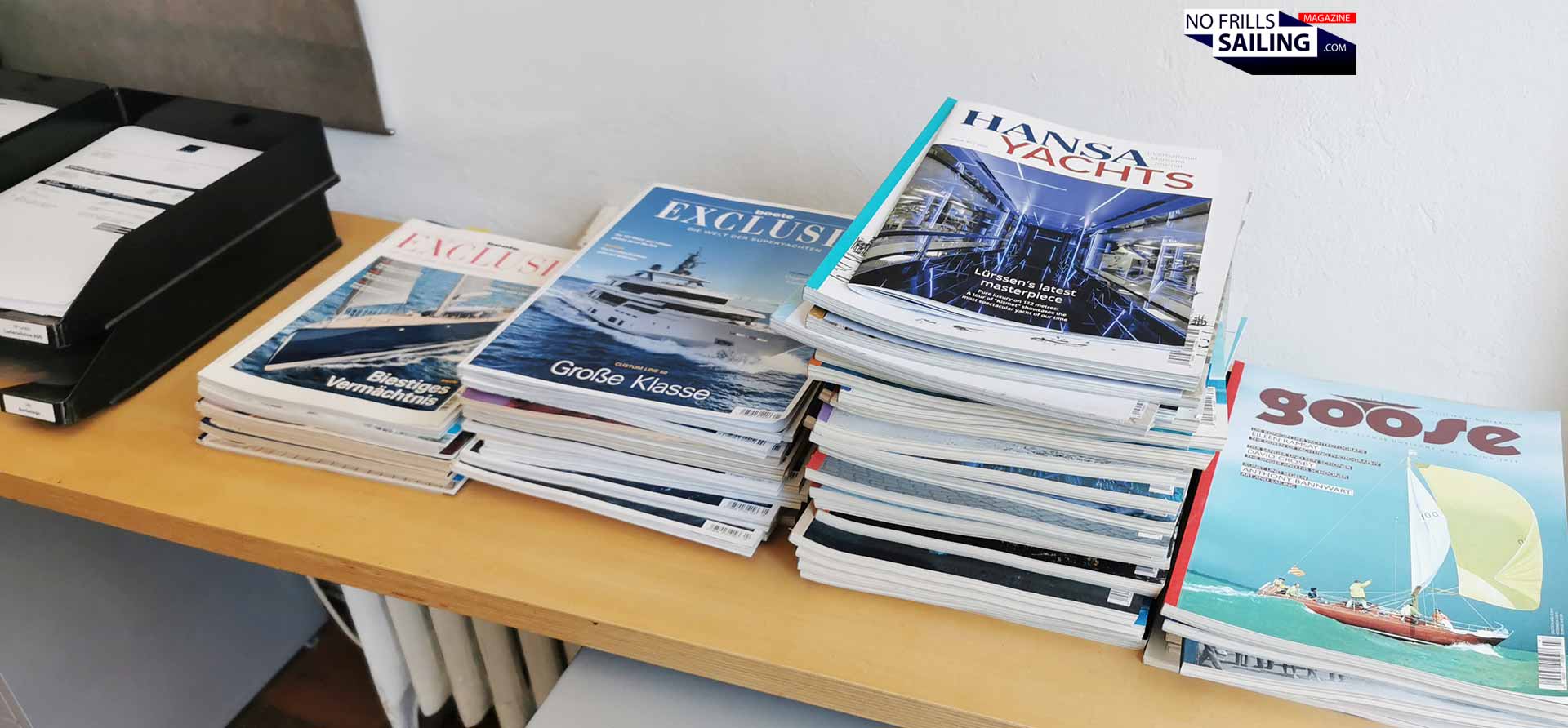
In one corner of Axel´s office there is a large shelf. Paperwork piles up at one side, sailing and boating magazines in stacks on the other. Magazines of all languages and sorts, power boats, super and mega yachts, sailing boats from cruising to regatta. Axel picks up one issue and doesn´t even have to browsed to the pages: His cleats are on the front page already!
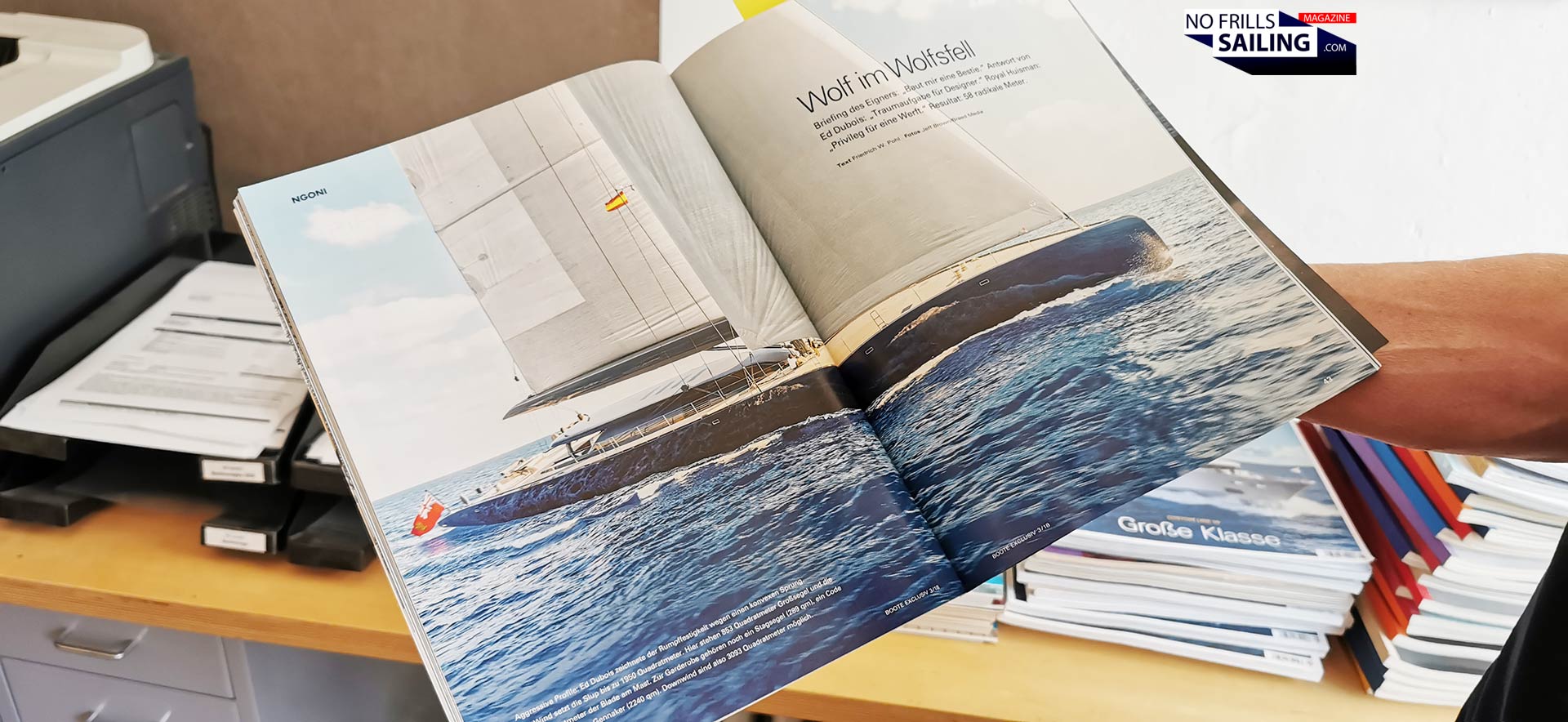
It´s the Royal Huisman built NGONI, dubbed the “Beast”. 58 meters of sheer luxury and pure elegance. Axel points to the bow: Shiny little things. Nomen cleats! He tells me the story that the designer insisted that he made the clamps for that boat and introduced Axel to both the shipyard and the owners. The end product was a huge custom made Nomen cleat, one of which can still be seen in his office.
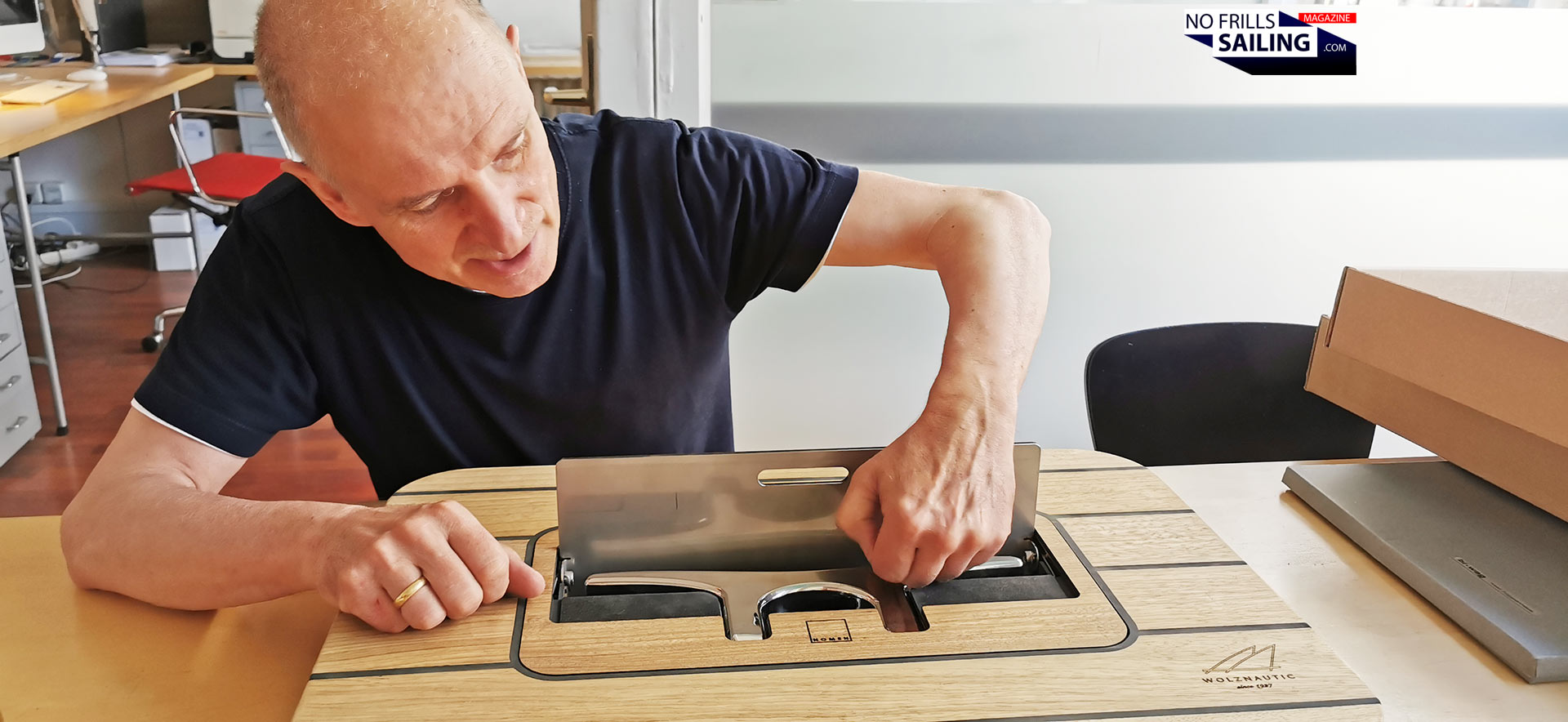
It´s not widespread marketing nor special advertising that keeps Axel´s business running. He says, he maintains a close contact with designers. This is how he got involved with a project made at Lürssen, the world´s leading shipyard for the highest grade mega yachts! When the task was to develop a clamp that could be fully retracted, but easily used and maintained, he developed a wonderful stainless steel-cleat that will disappear underneath a Teak-veneered flap. Fully flush. Lürssen does not accept anything less than world´s best quality. A accolade for any supplier!
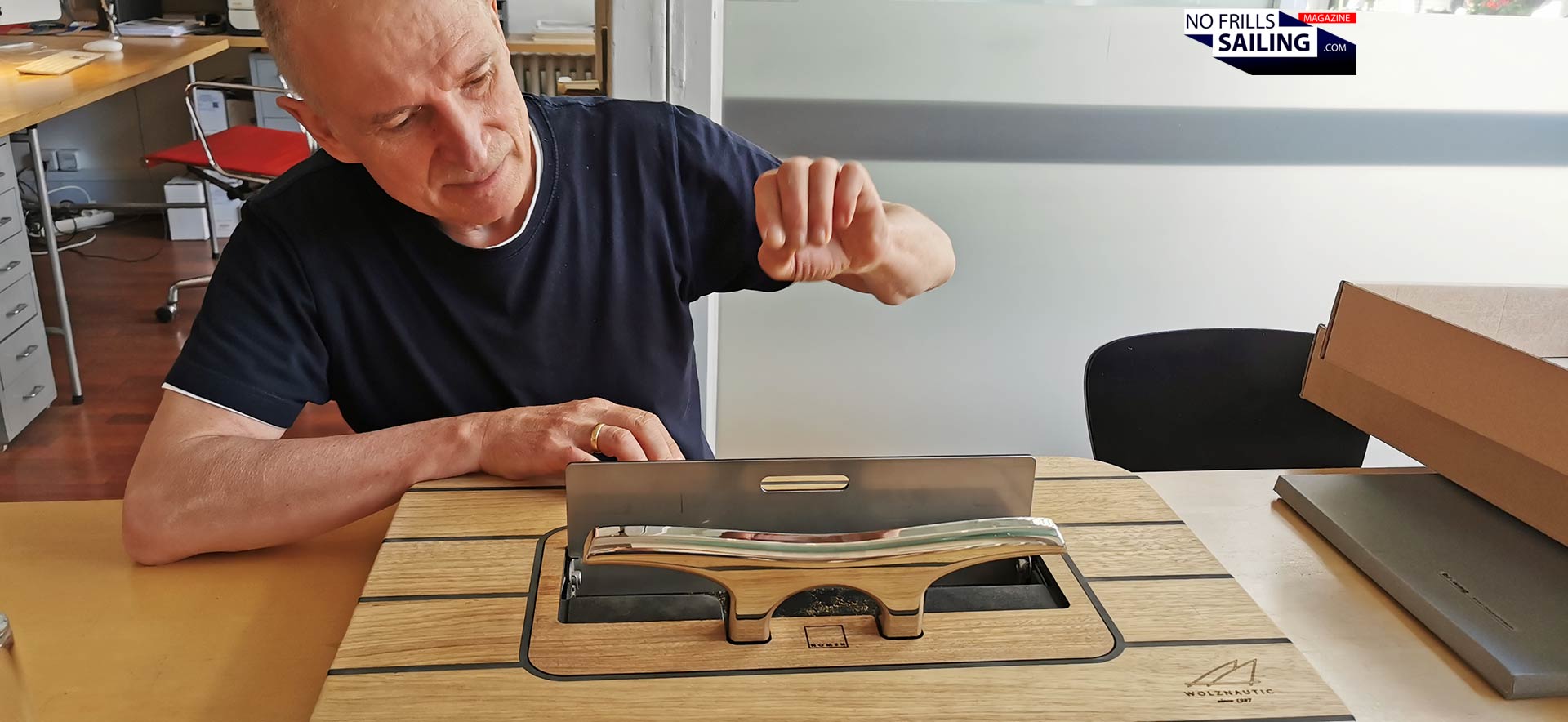
So it´s mainly word of mouth for Nomen, as experts call this: No more chicken houses needed, which is a well deserved reward for the hardship and suffering in the early years of his business. His wife even joined the business and helps with administrative and communication tasks. Nomen cleats are seen on series production boats as well as on luxury upper-shelf yachts. What an achievement, isn´t it? Now that I know the backstory, I am happy for Axel, even more!
What´s the Future of Sailing Yacht Cleats?
Axel has indeed invented the “perfect cleat”, at least from his perspective. He refines and further develops the product. So, what drives this man? Where is potential for even better cleats, room for improvement or new challenges to overcome? As Axel returns to his computer, he shows me some of his ideas.

There´s still a lot to do in terms of materials: Stainless steel has its clear advantages in many ways: It´s indestructible, can be polished to feature a bright shine and can be kept and refurbished to do so indefinitely. On the other hand, it´s heavy and really expensive. Axel works on ideas to re-introduce Aluminium. This material is lightweight and costs only one third – but it´s not as strong nor as good looking as steel. It may corrode over time. But here´s a lot to gain, Axel says.
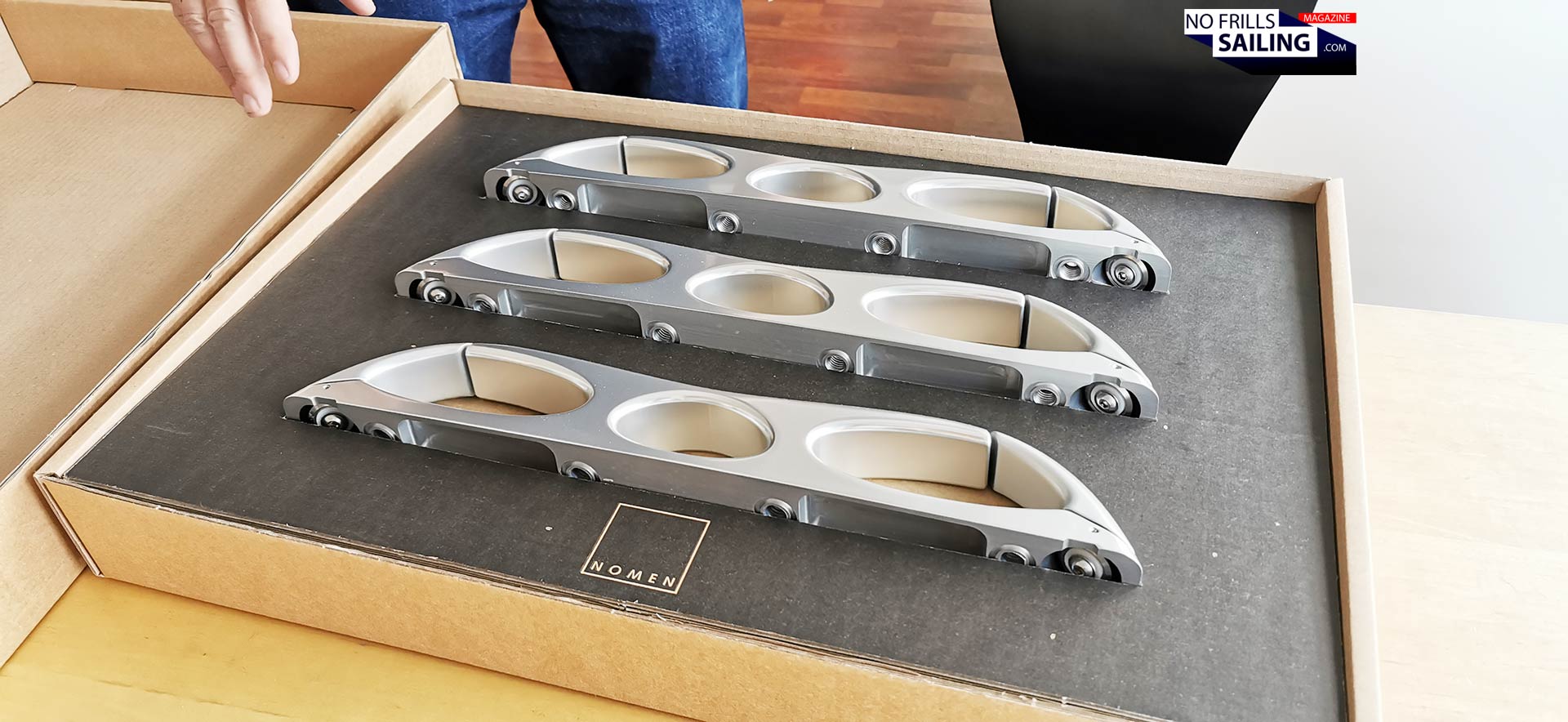
Another interesting topic is 3D printing. Yes, a 3D-printed stainless steel cleat! This is the only way to further improve shapes and designs, completely cross out wasting precious material by milling lots of offcut and come up with even greater shapes. This technique is advancing by the day and triggers Axel´s imagination. Nothing solid to show right now, but surely, there´s something up the pipeline. Other things, seemingly side-stages, but equally important, have been tackled by Axel already: Speaking sustainability and waste-reduction. As industry designer, he also came up with a unique packaging system that utilized solely recycled cardboard – it´s a nice way to present the products but avoiding plastic. Is there anything this man does not turn inside-out and re-define?
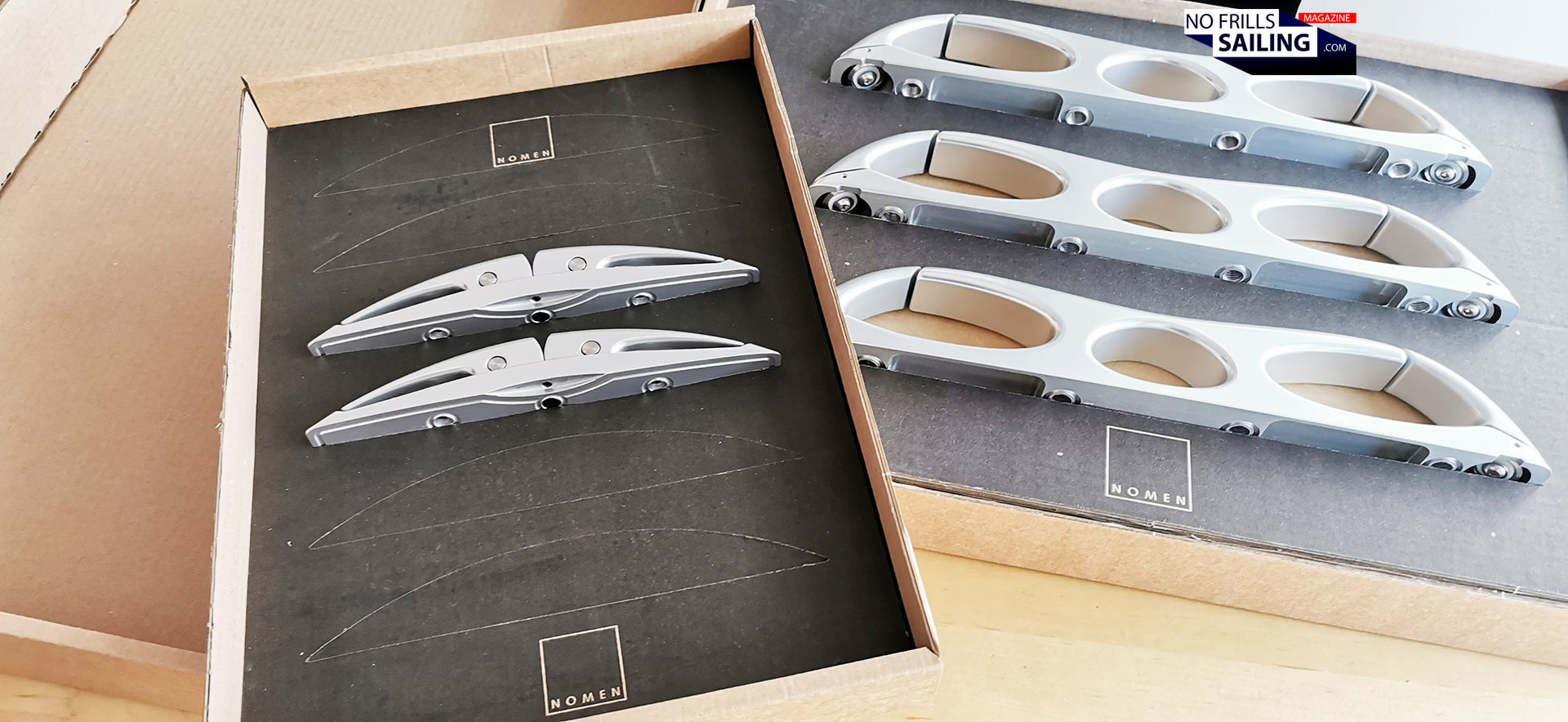
Of course I receive my cleats as well with the nice Nomen-cardboard boxes. I the face of the huge clamps made for 80 and 150 footers, my little 250 cleats look tiny. But I know that these stainless steel works of art mean the world for this man. He fought for his idea and went through so many hardship, mastered so many obstacles, that I know truly understand what entrepreneurship and spirit of enterprise truly means. Axel and his “perfect cleat” is a role model – and I am thankful and happy to having come here to pick up by cleats. In every sense of the word, from a chicken house to the most beautiful yachts. Chapeau, Axel!
Here are some connected articles which might also be of interest for you:
How to proper tie a proper cleat hitch
Rope salad of the past: A cool idea to hide away your running rigging
A flash of wit that may save a lot of plastic waste in boatbuilding
